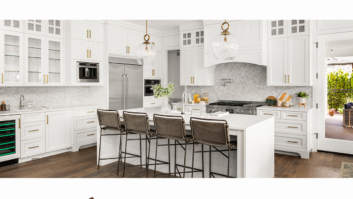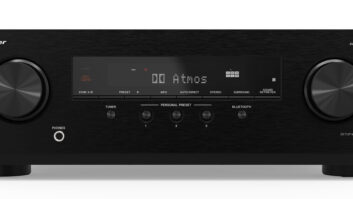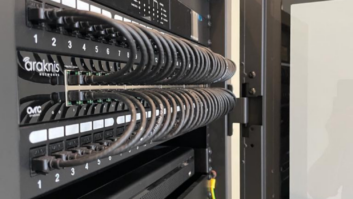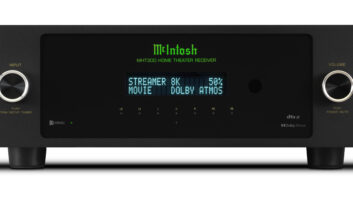We so frequently work with custom builders on custom projects where things like, “I need that wall reframed for my center channel” or, “We’re gonna need to have the electrician do this for us” are just standard operating procedure that we may lose sight of the experience that non-custom purchasers typically experience when they buy a “mass built” home from a production builder and want it outfitted with some audio/video system.
In the past I worked with one client who wanted music around her new home. We sat down and went over her floorplan and came up with a system that met her needs and budget. She even gave us a deposit on the work and we were all set to proceed with our pre-wire, until the builder informed us in no uncertain terms that we were forbidden from setting foot on the jobsite. Despite the fact that the client had signed a contract on the home, that the house was in fact being built for her, it wasn’t actually her home until the final payment had been made and the closing papers signed, and no other trades were allowed to work on the jobsite. Thank you, and good day.
Even worse? This builder didn’t offer any kind of solution for the client. Instead of just, “No, you can’t have them do it, but we can do it for you,” they offered nothing in the way of an audio system. The only solution was to wait until the home was finished, and then they could go crazy installing whatever they wanted. But because this was a multi-story home, there would be no way to go in and run the wiring after the fact. Essentially, the client was screwed and forced to miss out on something that could have easily been built into her new house. (This was before wireless solutions like Sonos, so feel free to spare me the comments about that.)
Recently we worked with another client whose home was under construction and paid his builder to have his home “wired for surround sound.” When he came into our store and asked what kind of a system we could install for him, I started asking him what I thought were some pretty basic questions about the wiring; as in, what did “wired for surround sound” actually mean? He assumed I would know, after all, I was the expert, so I should tell him what it meant.
“Well, first off, what type of wire are they pulling?” I asked.
“They said it was everything that I would need,” he answered.
“Umm, OK. And where are they pulling it to?” I queried.
“They said they are pulling it where it needs to go!” he said, getting agitated.
“O…K… So, what kind of front speakers do you need? In-wall? In-ceiling? On-wall? Bookshelf? Floorstanding? Where they pull the wire is going to determine that…”
I explained that “wired for surround sound” is about as vague as saying, “I bought a car.” What kind of car is it? How many seats does it have? Is it a compact or a convertible? Two door or four door? Is it a Toyota or a Tesla?
He then started rummaging through his portfolio of papers, saying that all he knows was that he paid $450 to have his home wired for surround sound. He finally found his contract and then found the single line item on the optional upgrades list that read, “wired for surround sound.” But it was actually $750. While I give the builder points for brevity, if they were truly going for the less-is-more approach, they could have trimmed it another 25% by going with, “surround sound wiring,” which would have been just as vague.
The room was a basic 15 x 15 foot square with 10-foot ceilings. The electronics were going into a bookcase to the right of the fireplace, so besides $750 being totally egregious for this amount of work, the client had absolutely no idea what they were buying and zero information to refer to.
To show him the difference, I pulled out one of our estimates for a client wanting to be “wired for surround sound.” It listed the wire brand and gauge, the number of wires and where they were being pulled, the installation and brand of speaker frames where needed, the type and quantity of cabling going from the electronics to the display, and the wire going to the subwoofer. Not to mention wall boxes, fire caulk, zip ties, and labor. Beyond justifying a far cheaper price, the homeowner had a clear understanding of exactly what they were buying.
After looking at his plans, I told him we should easily be able to retrofit a system for him after the fact, and that even with the extra time needed to retrofit, it would still cost considerably less than $750. Then we could make sure he had all the right wires pulled to exactly where they needed to go for whatever style of speaker he wanted and he should just tell the builder to forget it.
He said any changes cost him a $250 penalty and he was just going to go ahead with it. He said the builder would allow him to have someone come and inspect the wiring after the work was finished, but we couldn’t touch anything. I told him that our company generally isn’t in the business of inspecting other trade’s work and then telling them what they did wrong, but if he wanted to pay me to go and look at the wiring, I’d be happy to…
On the one hand, I can kind of see the point. This is a profound difference between production built homes where options are strictly limited, and custom where the sky is the limit. These builders run on tight corporate schedules and timelines, with work often scheduled weeks or months in advance. A given crew has a narrow window of time to come in and complete their work before shuffling off to the next home to rinse-and-repeat. The builder can’t afford to have some unknown entity coming in and possibly holding up the show or getting in the way. There may also be issues with insurance if anyone got hurt or if something got damaged.
Yet at the same time, just because someone isn’t going custom it shouldn’t mean that they get the total shaft.
Have any of you made any headway in building a symbiotic relationship with a production builder? I would love to hear your thoughts in the comments.
John Sciacca is principal of Custom Theater and Audio in Myrtle Beach, SC.








